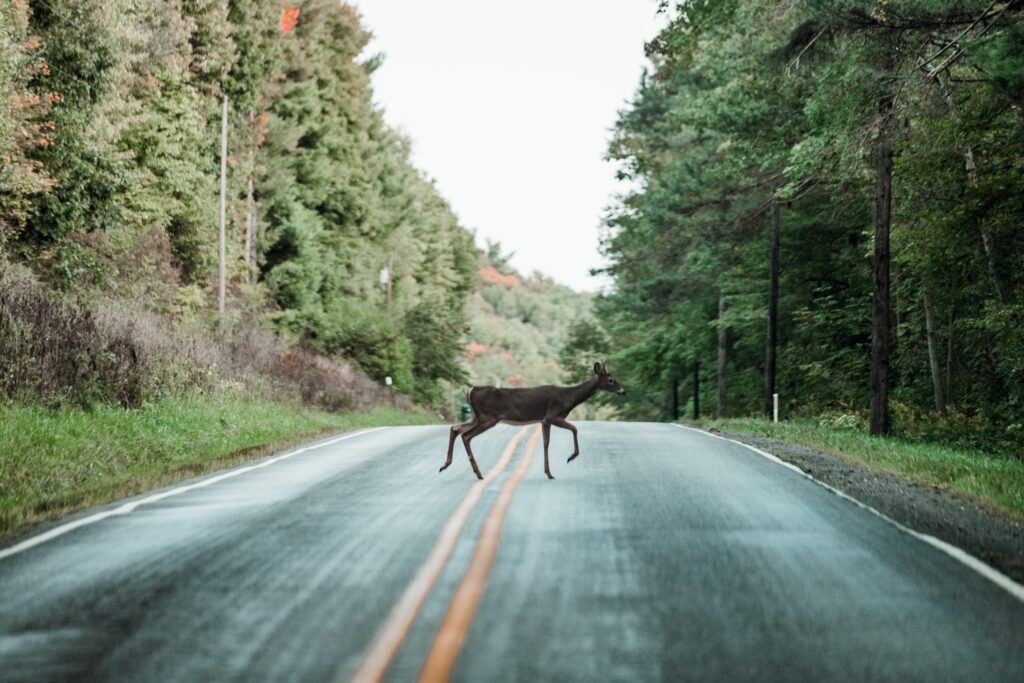Dec 27th 2023 | by Mary Scott Nabers
Here’s something that will be easily missed… but hopefully not by our readers.
In December, the Federal Highway Administration announced $110 million in grant funding for 19 wildlife crossing projects in 17 states. That may sound like these projects will be small, but that is not the case.
This funding is available now through a new pilot project, which was created to support projects that are designed to reduce the number of collisions between wildlife and vehicles. These types of collisions kill people as well as animals, and the accidents create huge property damage costs.
Annually, wildlife-vehicle collisions cause about 200 deaths to motorists and injure 26,000 additional people. The property damage averages out at about $8 billion each year. As a result, the benefits gained through wildlife crossing projects far outweigh the costs.
Some of the new funding has already resulted in upcoming projects that will soon be launched. In Wyoming, Highway 189 intersects a natural migration pattern for deer herds. There are an average of 6,000 vehicle collisions each year that result in tens of millions in personal injury and wildlife costs. The Wyoming Department of Transportation received a $24.3 million grant to complete a multipart wildlife crossing project to alleviate these types of occurrences. The federal grant will be combined with state funds for the project, which carries a total cost projection of $37.4 million.
The project will include the construction of five underpasses, one overpass and fencing improvements along a 30-mile portion of the highway. Fencing will be replaced with higher barriers and used to guide herds to other wildlife crossing areas. The project will be completed in three phases, prioritized to alleviate areas with the most wildlife-vehicle collisions first.
The Colorado Department of Transportation (CDOT) will use $22 million in federal grant funding to construct a wildlife crossing overpass over I-25 in central Colorado. Serious collisions between wildlife and drivers are a persistent issue in the region. The objective is to reduce the risk of crashes between drivers and local fauna.
The overpass will be 204 feet wide, sprawling over the equivalent of an eight-lane interstate. The project being designed will add gradual slopes next to the overpass so that wildlife can cross. By the time of its completion, the I-25 Greenland Overpass will be one of the largest wildlife overpasses in North America, providing safe passage for elk, black bears, mountain lions, moose, and other large creatures. Construction is slated for May 2024.
In partnership with the Southern Oregon Wildlife Crossing Coalition, the state’s Department of Transportation will be responsible for helping to scope, design, and construct a network of eight wildlife crossings from south of Ashland, Oregon, to the California state border. The project will focus on greatly reducing collisions involving black bears, deer, and elk. One crossing over the Cascade-Siskiyou National Monument within the Mariposa Preserve along I-5 has been given priority, and construction costs for the bridge have been estimated to be approximately $20 million.

Photo by Donnie Rosie on Unsplash
The Oregon legislature has allocated $1.5 million in grant funding for planning, design and implementation, which is currently underway. No cost projections have yet been made and construction may not begin until at least 2025. State leaders hope this effort will serve to promote safe wildlife crossings in the future.
In Lake County, Montana, the Confederated Salish and Kootenai Tribes received $8 million in federal funding for the construction of a wildlife overpass that stretches over Highway 93. The construction of the overpass is part of a larger project, valued at $30 million, to rehabilitate the portion of Highway 93 between Dublin Gulch Road and Gunlock Road. By changing this section of highway 93, project planners hope to protect local wildlife and motorists by creating safer infrastructure that minimizes risk to both. Central features of the rehabilitation and reconstruction will include a wildlife overpass spanning Highway 93, the revision of its 8-foot shoulder lanes, and the additions of a northbound truck climbing lane, left-turn lanes for major intersections, and a shared-use path, which will provide a trail for cyclists and pedestrians.
The California Department of Transportation (Caltrans) has been awarded $8 million to implement a project designed to reduce wildlife collisions with motorists in Santa Barbara County. Data reports that vehicle-wildlife collisions are common along six miles of U.S. Route 101 within the Gaviota Pass Corridor. Transportation officials will oversee a project to enhance an existing culvert and erect 2.5 miles of wildlife fencing. The project is somewhat smaller, with a construction cost of $10 million, but other wildlife crossing projects will follow. A 12-month study was performed in 2022 by a consultant, the California Department of Fish and Wildlife, and Caltrans to analyze the spatial and temporal patterns of wildlife movements and collisions within a six-mile span from Nojoqui Summit to Mariposa Reina. Wildlife at risk of causing collisions with motorists include mountain lions, black bears and mule deer. A future project will be designed to provide safety for wildlife and motorists along this roadway.
The Utah Department of Transportation (UDOT) plans to construct three wildlife underpasses and extend fencing along U.S. Highway 89 near the city of Kanab. A $5.5 million grant from the U.S. Department of Transportation has allowed local leaders to get the project started soon. According to UDOT, there have been 72 wildlife-vehicle collisions reported along US-89 in the last several years. One ended in a fatality. Seven wildlife underpasses already exist along the north-south highway near the Utah-Arizona border, and the additional three to be constructed will further help reduce collisions. Another $20 million is available for other wildlife crossing projects in the state. This funding was allocated by the state’s legislature, and it will allow Utah to receive even more federal matching funds for wildlife crossings designed to increase safety.
Roadway safety is a high priority for every state and wildlife crossing locations are particularly dangerous areas for motorists. Companies interested in pursuing this type of work should call the local state department of transportation and ask about upcoming wildlife crossing projects.
 As President and CEO of Strategic Partnerships, Inc., Mary Scott Nabers has decades of experience working in the public-private sector. A well-recognized expert in the P3 and government contracting fields, she is often asked to share her industry insights with top publications and through professional speaking engagements.
As President and CEO of Strategic Partnerships, Inc., Mary Scott Nabers has decades of experience working in the public-private sector. A well-recognized expert in the P3 and government contracting fields, she is often asked to share her industry insights with top publications and through professional speaking engagements.
Tags: Federal Highway Administration, Highway Safety Initiatives, Inc., Infrastructure Grants, Mary Scott Nabers, Public-Private Partnerships, Road Safety, State Transportation Departments, Strategic Partnerships, Vehicle-Wildlife Collisions, Wildlife Crossing Projects






 RSS Feed
RSS Feed